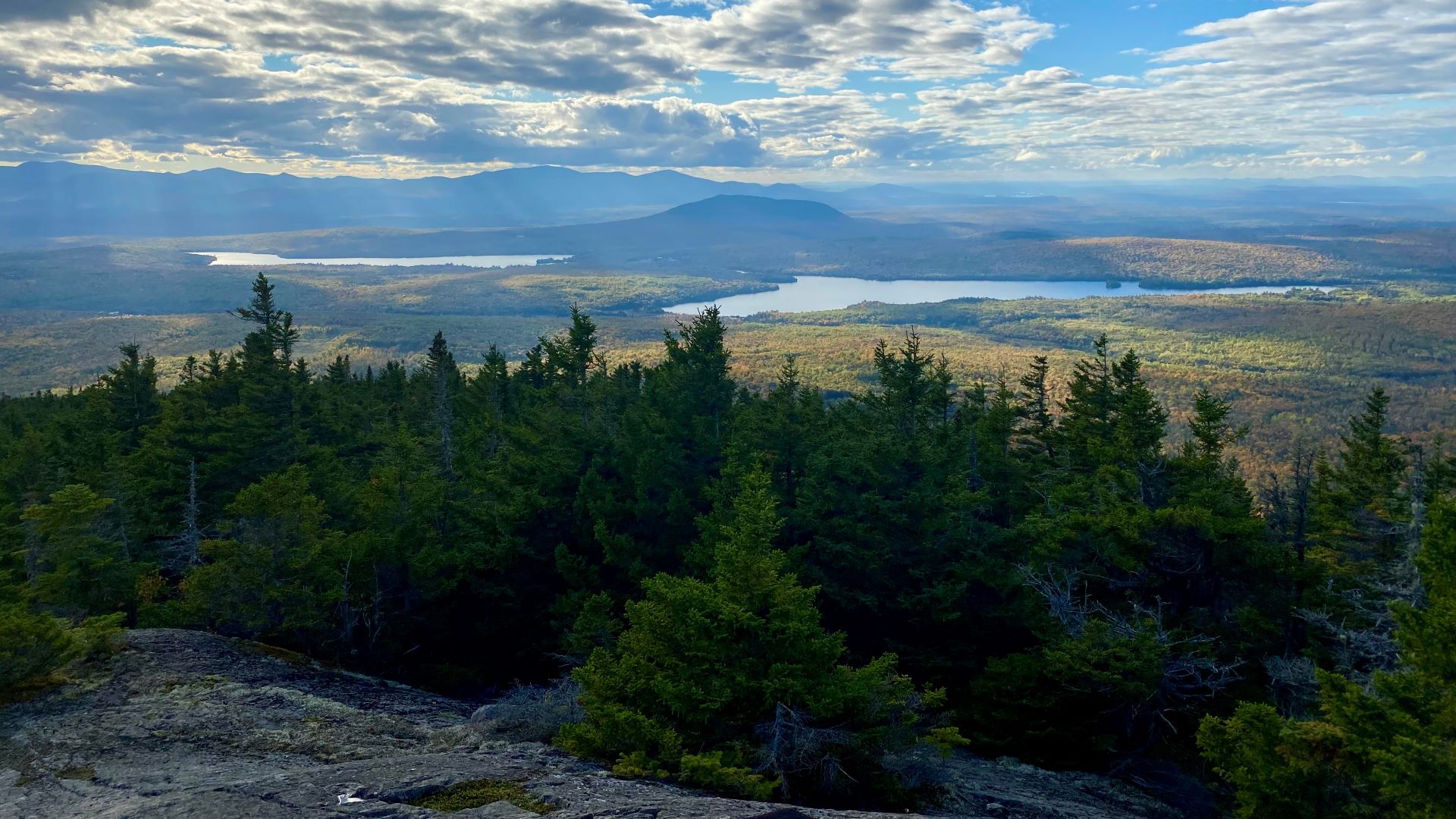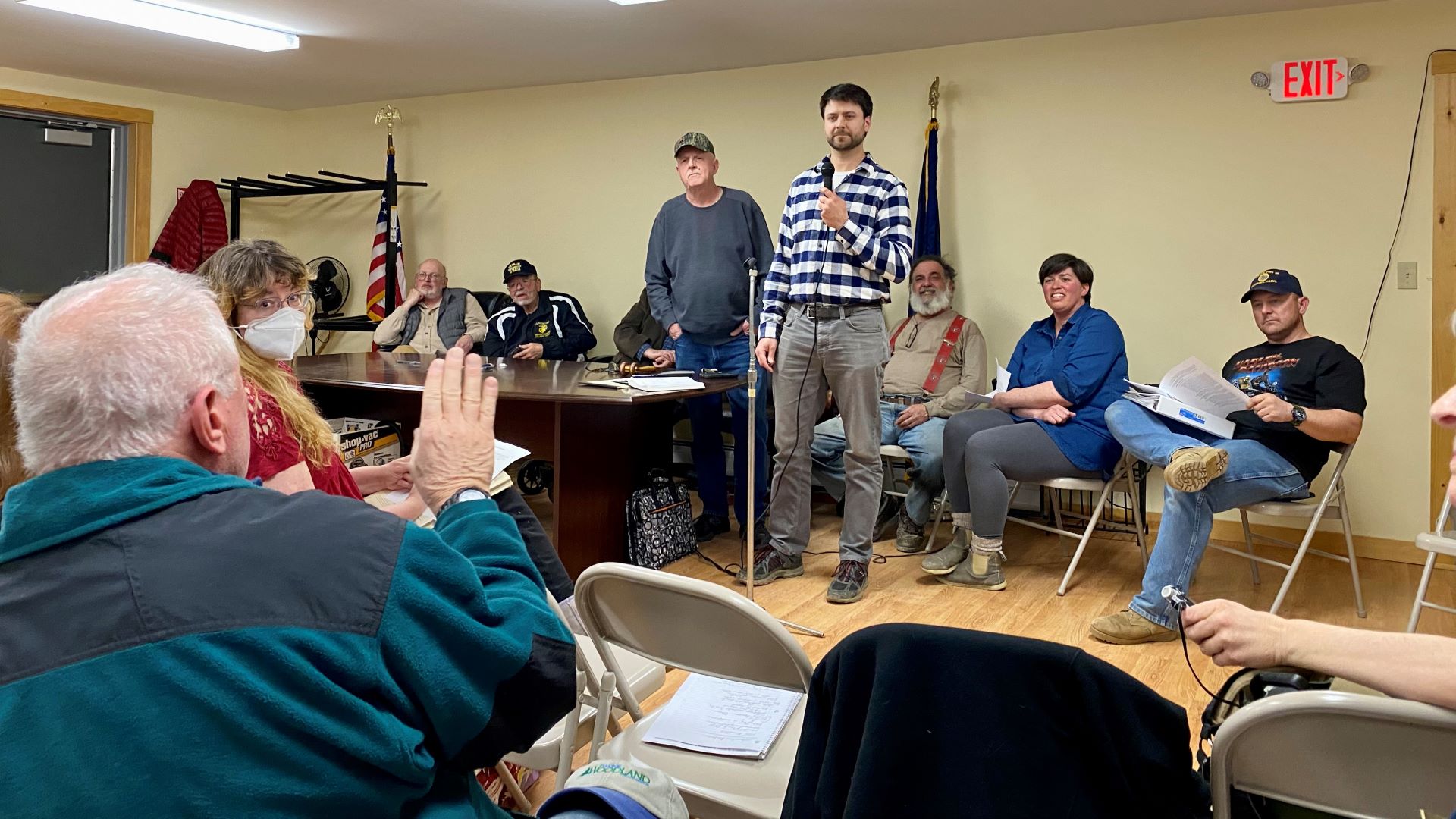In an effort to appease regulators and skeptics, a Canadian company hoping to dig for zinc and copper in the shadow of Mount Katahdin said it has made substantial changes to plans for treating wastewater at the proposed Pickett Mountain mine.
Jeremy Ouellette, the vice president of project development for Wolfden, described the changes as a shift from primarily using a “chemical water treatment” to a “mechanical reverse osmosis system” similar to those used in households to purify drinking water and in seawater desalination plants to remove salt.
“It’s not new technology,” said Ouellette, who offered a list of 10 mines, including the Fort Knox Gold Mine in Alaska and the Bingham Canyon Mine in Utah, as examples of sites where reverse osmosis is used to treat dirty water from the mine.
Wolfden Resources Corp. filed an application in January with the Land Use Planning Commission to rezone an area near Patten, a town with slightly fewer than 900 residents just east of Katahdin Woods and Waters National Monument. The rezoning is the first step in a years-long mining application process.
It’s the second rezoning application Wolfden has filed in the past two years for the mine it wants to build on Pickett Mountain. The company withdrew a previous petition in 2021 after planning commission officials indicated they would reject it based on repeated failures by Wolfden to answer questions on a variety of issues, including as basic as how many acres they wanted rezoned (the final tally this time is 374).
RELATED: Wolfden CEO calls mining rejection a ‘speed bump,’ vows project will continue
A primary concern of regulators and advocates alike has been preserving water quality. The deposit at Pickett Mountain occurs in bands of rock rich in iron sulfides, which, when exposed to air or water, create sulfuric acid. Once the production of sulfuric acid has begun, it can be difficult to stop, polluting waterways for decades, a phenomenon known as acid mine drainage.
Mining operations require millions of gallons of water to help separate out the target minerals during the mining process. That water, laden with heavy metals and pollutants, must then be treated before it can be discharged into the environment. In its most recent application, Wolfden proposed building a massive reverse osmosis water treatment plant on site. Water that can’t be cleaned to the standards required by the state will be recirculated through the system, said Ouellette, or mixed with concrete for use as mine backfill.
Ouellette acknowledged that although the proposed reverse osmosis treatment is used at mines around the world, none are required to treat processed water to the cleanliness standards required in Maine. The state requires water that’s returned to the environment to be as clean or cleaner than what’s already present.
Environmental advocates are skeptical that the plans are enough to safeguard water quality in the area, home to some of the state’s purest streams and the headwater of the West Branch of the Mattawamkeag River. Maine rules prevent the company from discharging to any water body in the area, so the engineering firm hired by Wolfden recommended that the company dispose of treated water through spray irrigation and snowmaking, techniques commonly used by agricultural and other industrial operations in New England.

Dave Chambers, an engineer and the president of the Center for Science in Public Participation, a nonprofit that provides technical assistance on mining and water quality, agreed that reverse osmosis is “well accepted and widely used” for water treatment. But it’s an expensive approach, said Chambers, who wondered if the state would require enough money up front to guarantee that water treatment could continue forever, if necessary.
Maine requires companies to put up funds for a “worst-case scenario,” but lets companies outline what they think that is. Wolfden has proposed putting $13.6 million aside in the event the tailings facility fails. Critics point out that’s far less than the estimated $1.36 billion the mine would be estimated to generate over its 10-year life, and not nearly enough to cover water treatment in perpetuity, if required.
Chambers also wondered about plans for the tailings — waste material that’s left over after the target metals are removed.
The company proposed a fully-lined tailings facility to contain the waste, said Chambers, but liners “always” leak, releasing contaminated water into the environment, which means the company will need to have the ability to treat contaminated water even after the mine is closed. “Money should be in place in case things don’t go as planned, and the reverse osmosis treatment is required longer than originally estimated.”
Reverse osmosis is, on its face, fairly simple: Dirty water is forced at high pressure through a membrane, which collects all manner of salts, minerals and other contaminants. Households may use reverse osmosis to purify drinking water; it’s also used in seawater desalination and semiconductor manufacturing.
Detractors say cost is one of the big hurdles with reverse osmosis, particularly on the scale proposed by Wolfden.
Treating water to Maine’s high standards, said Nick Bennett, staff scientist for the Natural Resources Council of Maine, would theoretically be possible with reverse osmosis. But “that takes a big reverse osmosis plant, which is very expensive, and then you also end up with very contaminated waste, very toxic waste that you have to dispose of … It’s not going to make economic sense.”
Ouellette said the margins are large enough that the company could pull it off. With a deposit of 4 million tons, each worth $500-$600, the company estimates it will cost less than $200 per ton to manage the water. A preliminary economic assessment included in the application put the cost of operating the water treatment plant at $1.74 per ton. “So the margin is extremely massive,” said Ouellette.
Wolfden also proposed moving the tailings facility to another, unspecified location, but Ouellette wouldn’t confirm where the company was looking.
“The only way that we can confirm those locations is by getting through the rezoning with the Planning Commission and then studying all of these locations” in detail, said Ouellette.
Bennett worried that the plan to move the treatment plant was a way to streamline the rezoning process and make it easier for the company to move on to the mining permit process with the Department of Environmental Protection. “If you don’t know where you’re going to put the beneficiation plant, why should anybody give you a permit to mine in the unorganized territories?”
Staff at the Land Use Planning Commission are reviewing the application and expect to open the process for public comment this summer. If Wolfden gets the area rezoned, it will then have to apply for a mining permit through the Maine Department of Environmental Protection, a process that could take years.
Kate Cough covers the environment for The Maine Monitor. Reach her with other story ideas by email: gro.r1764803115otino1764803115menia1764803115meht@1764803115etak1764803115.








